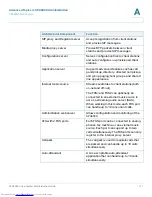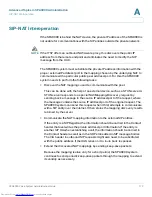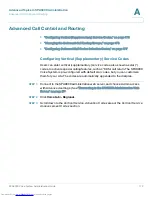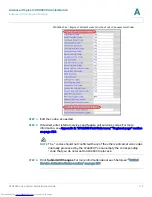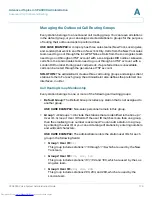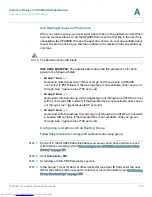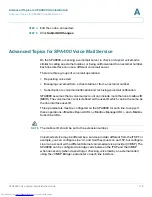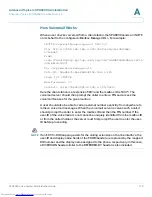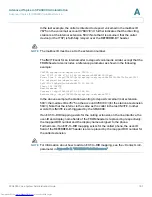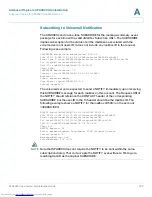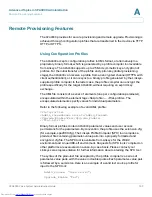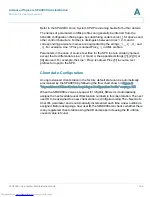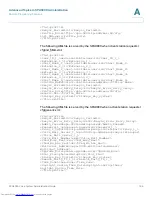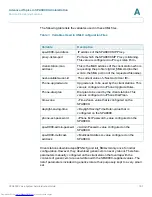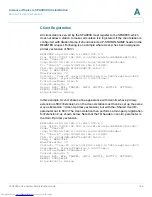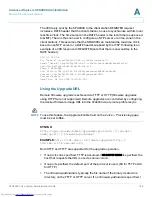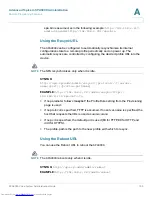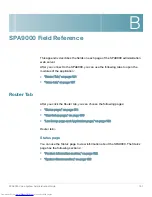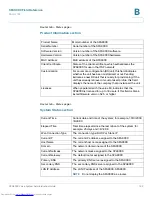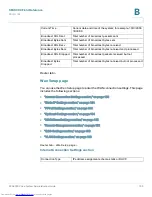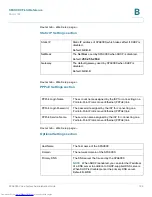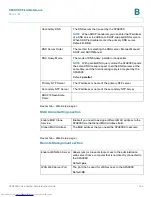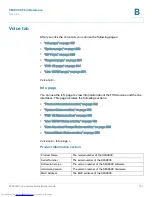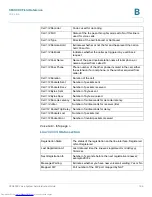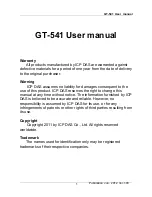
Advanced Topics in SPA9000 Administration
Remote Provisioning Features
SPA9000 Voice System Administration Guide
184
A
Refer to the
SPA9000 Voice System SPA Provisioning Guide
for further details.
The names of parameters in XML profiles can generally be inferred from the
SPA9000
configuration Web pages, by substituting underscores (_) for spaces and
other control characters. Further, to distinguish between Lines 1, 2, 3, and 4,
corresponding parameter names are augmented by the strings _1_, _2_, _3_, and
_4_. For example, Line 1 Proxy is named Proxy_1_ in XML profiles.
Parameters in the case of source text files for the SPC tool are similarly named,
except that to differentiate Line 1, 2, 3, and 4, the appended strings ([1], [2], [3], or
[4]) are used. For example, the Line 1 Proxy is named Proxy[1] in source text
profiles for input to the SPC.
Client Auto-Configuration
An unprovisioned client station in the factory default state can be automatically
provisioned by the SPA9000 by following the flow chart shown in
Figure 5
“Unprovisioned Client Station Acquiring a Configuration Profile” on page185
.
When the SPA9000 receives a request for /cfg/init_$MA.xml, it automatically
assigns the next available user ID (extension number) to this client station. The next
user ID to be assigned to a new client station is configured using The <Next Auto
User ID> parameter and is automatically incremented each time a new number is
assigned. Before assigning a new user ID, the SPA9000 also checks whether there
is any registered client station using that ID and keeps increasing the ID until an
unused value is found.
Downloaded from
www.Manualslib.com
manuals search engine


